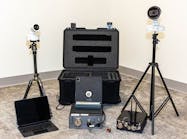Proper planning is the backbone of all fire departments. The regular inspection of facilities and structures, the development of strategies and tactics, the design of new apparatus, and the adoption of budgets each benefit from careful and comprehensive analysis. Disaster response is no exception.
Agencies have increasingly become involved in the creation of continuity of operations (COOP) plans that are designed to ensure the seamless provision of services in the face of extraordinary challenges. Obviously, natural disasters and severe weather place significant stress on the response system. Nowhere is this stress more apparent than in our dispatch and communications centers.
It’s an unfortunate fact, however, that it doesn’t take an environmental event to compromise many public safety answering points (PSAPs.) One big fire often tips the scales in favor of chaos. At these times, COOP is not fixed on a long-term goal, but rather focused on surviving the afternoon. In order to understand the impact of even a single significant emergency, it’s important to understand current conditions.
A perfect storm
To begin with, many if not most 9-1-1 centers are understaffed. In 2000, the Association of Public-Safety Communications Officials (APCO) established a Staffing Task Force to examine issues in the industry. After 17 years, the committee still exists, albeit under a different name, but the problem remains the same: Less than 5 percent of dispatchers remain in the field until retirement.
What has changed is the impact of technology. According to CTIA, there were 377.9 million cellular subscribers in 2015—an increase of 170 million in just 10 years. While more than 90 percent of U.S. households had conventional telephones in 2005, barely half of them did a decade later. Further, the Federal Communications Commission (FCC) now attributes about 70 percent of 9-1-1 calls to wireless users. This is a game-changer since cellular calls typically take longer to process due to the time required to obtain and validate an exact address, and because the proliferation of phones has created an over-reporting of emergencies. It is not unheard of for 100 or more calls to come in for a single event. Because many are simultaneous, answering and processing is considerably slowed for not only that incident, but also for the unlucky citizen who has a different problem at the same time. And since calling frenzies can occur for subsequent emergencies, PSAPs often require extended recovery periods.
Major incidents also generate commensurate responses, and dispatchers must deal with additional alarms and mutual aid. These resources require dispatching and ongoing coordination. While the incident commander may have help available immediately upon request, the communications supervisor is not similarly blessed. A limited amount of off-duty telecommunicators are typically available for call back, and it may take some time and logistics for their return to duty. More likely, the PSAP will continue to work shorthanded, which will be further compounded if they comply with NFPA 1221: Standard for the Installation, Maintenance, and Use of Emergency Services Communications Systems, and dedicate a dispatcher solely to the main event.
Key considerations
Given these realities, it is imperative to develop a plan that enables the dispatch center to effectively perform during periods of increased demand. Here are some considerations that may be of help.
- Streamline all policies and procedures. Everyday tasks that are flawed may not expose themselves until performed under pressure. Fix those that are not working. Utilize checklists and “if/then” formatting to ensure proper workflow.
- Use alternate means of accomplishing tasks. Making manual notifications is laborious. Automated systems save time and are programmable to a variety of scenarios. If you can’t afford to purchase one, look at subscription services or sharing a device with neighbors.
- Identify duties that can be permanently abolished. Too often communications is assigned non-emergency duties due to their 24-hour presence. These often grow in complexity and volume, sometimes compromising the ability to manage real emergencies. By redirecting media calls for traffic information, for example, one facility I managed reduced their annual call load by 25,000. Seek similar opportunities within your organization.
- Fully utilize all technology. Dispatchers are frequently asked to carry out duties that can be performed by first responders through mobile data terminals, cell phones and online access. While some situations may benefit from central control, in many cases, practices simply fail to reflect current capacities.
- Investigate methods of managing inbound calls. Overload plans can shift excess calls to neighboring centers, and announcement messages can advise callers that a major event has already been reported. Because each comes with a downside, a careful and realistic assessment of benefits must be made prior to implementation.
- Seek out internal processes that can be temporarily suspended to reduce workload. Does your facility serve as a central station? Perhaps the discontinuance of testing is in order. Are scripted protocols, such as Emergency Fire Dispatching (EFD) and Emergency Medical Dispatching (EMD) in place? While no one discounts their benefit, some organizations have agreements that allow for bypassing these routines under pre-specified conditions.
- Look externally for relief. During periods of high demand, departments sometimes reduce their response assignments accordingly. This streamlines dispatch and saves time.
- Make the most of what you have. Recall on-duty employees from lunch and other breaks. Hold over the current shift, if needed, and bring the next shift in early if the timing is right. Establish a call-back protocol that is well defined and understood. Anything that improves the timeliness of response is beneficial.
- Use all available resources. Just as the chief should not be on the nozzle, the 9-1-1 director should also not be working a console. However, there are other administrative personnel (often with communications experience) who may be available to assist. While not assigned to primary functions, they can still perform helpful duties. Similarly, employees from other divisions may also contribute their time. With these individuals focused on management of non-emergency calls, notification and public information, dispatchers can fully concentrate on core needs.
- Take advantage of all intelligence. Special events and some forms of severe weather don’t develop overnight. Utilize your knowledge of the forecasted situation to pre-emptively fuel generators, augment staffing and arrange transport, lodging, food and sanitation.
- Join or create a Telecommunicator Emergency Response Taskforce. These are typically chartered on a statewide basis, and codify agency participation, training, and deployment. While of limited use during short-duration emergencies, entering into this formalized process will afford the closest thing to mutual aid available during true disasters.
- Put your “Aces in Places.” The fast food industry has long recognized that employees have differing skill sets. Since our product is more critical than a good hamburger, it makes even more sense to recognize the strong suits of our personnel, and assign them where they are best utilized during critical operations.
In sum
Major events can present troubling challenges to communications centers. These challenges can be minimized by planning for periods of high demand.

Barry Furey
BARRY FUREY, who is a Firehouse Contributing Editor, provides consulting and training services in emergency communications. He is the former director of the Raleigh-Wake Emergency Communications Center in North Carolina. During his 50-year public safety career, he has managed 9-1-1 centers and served as a volunteer fire officer in three other states. In 2005, Furey received a life membership in the Association of Public-Safety Communications Officials (APCO) International for his continued work in emergency communications. Furey was inducted into the Firehouse Hall of Fame in 2017.






